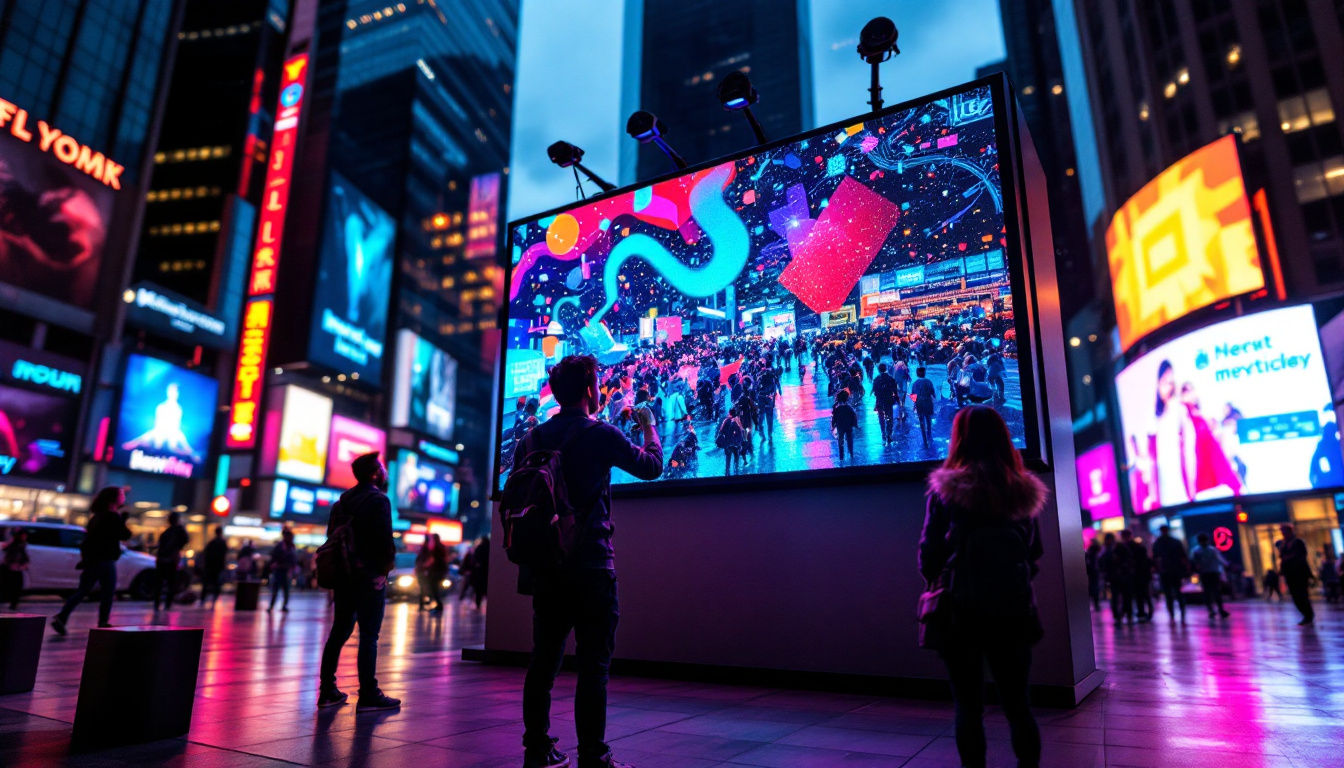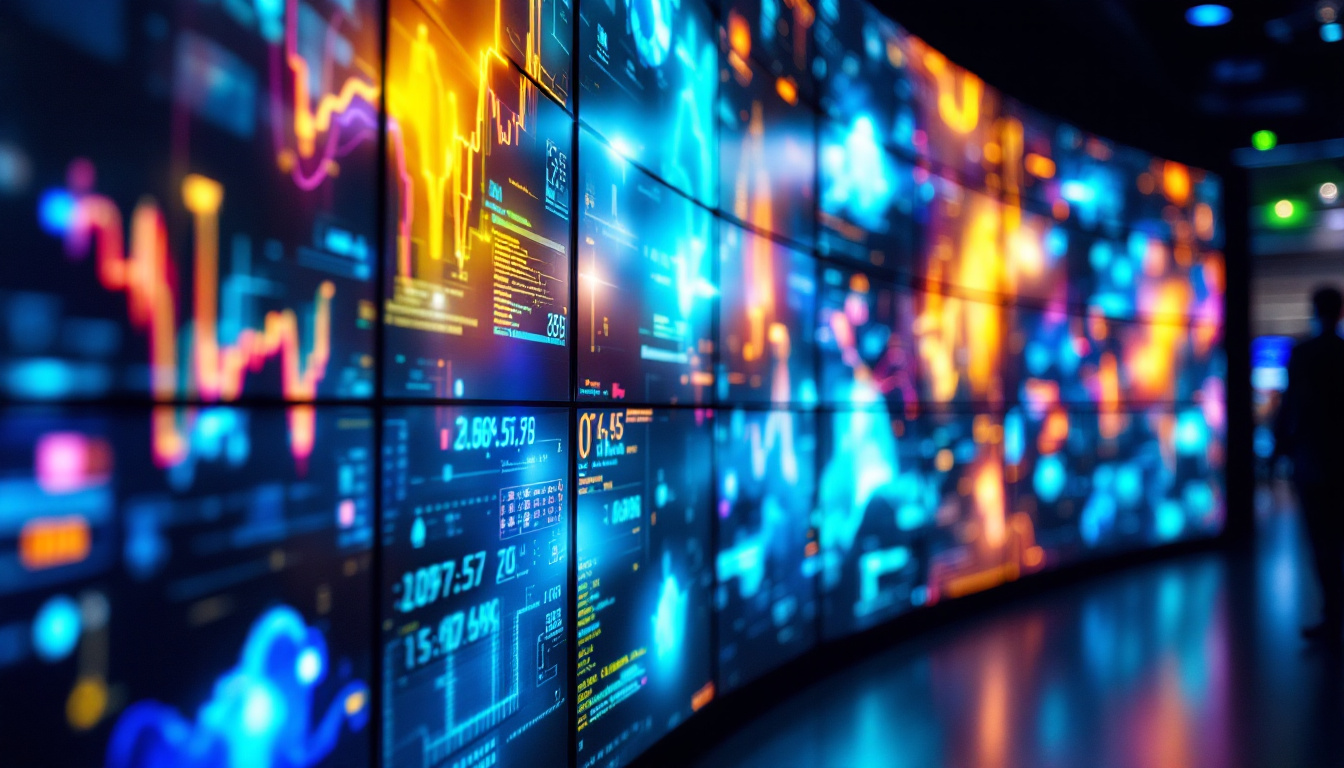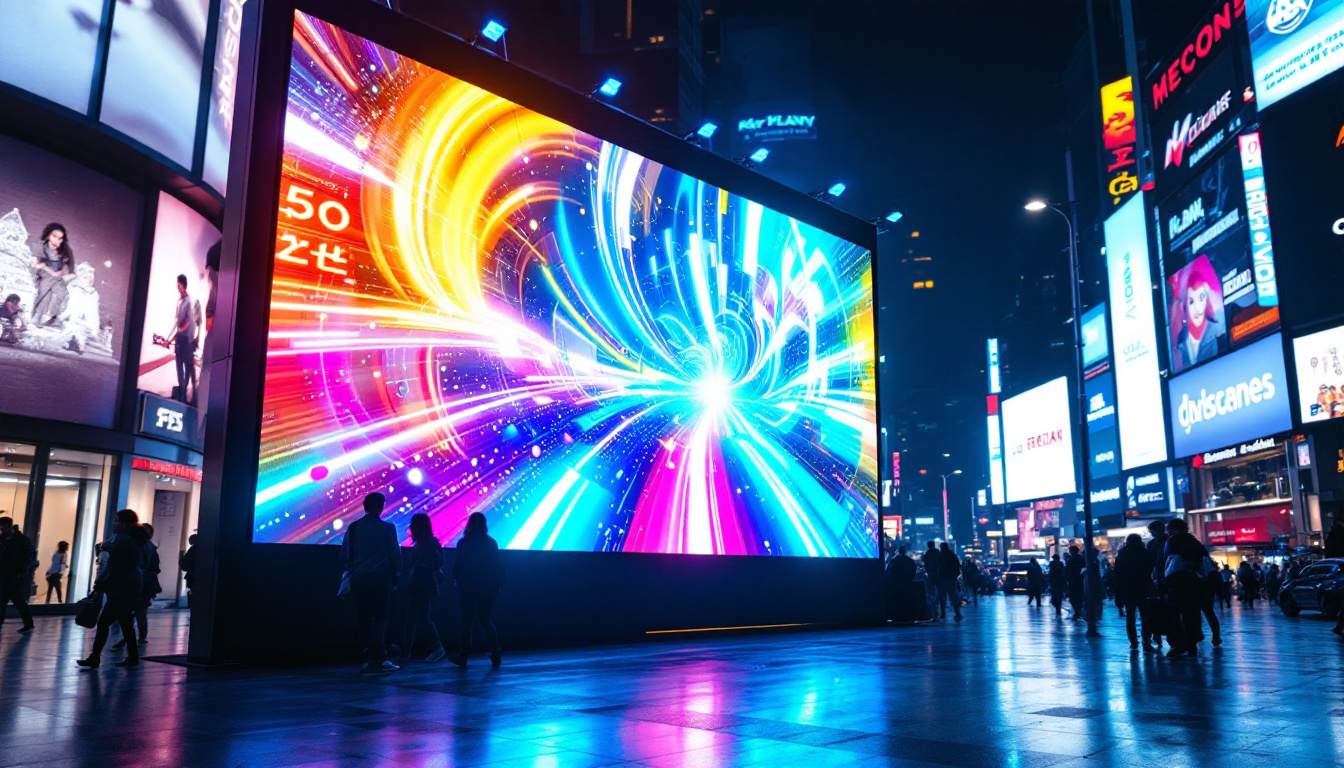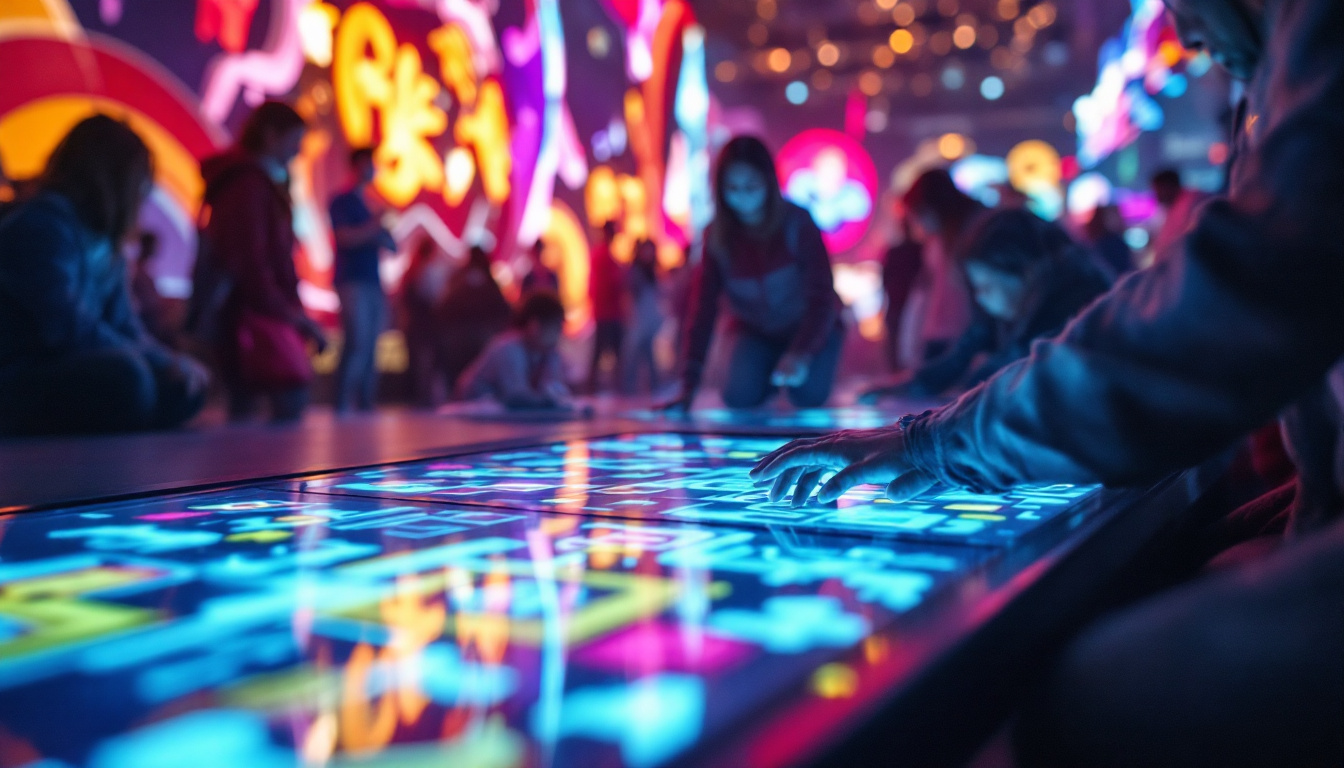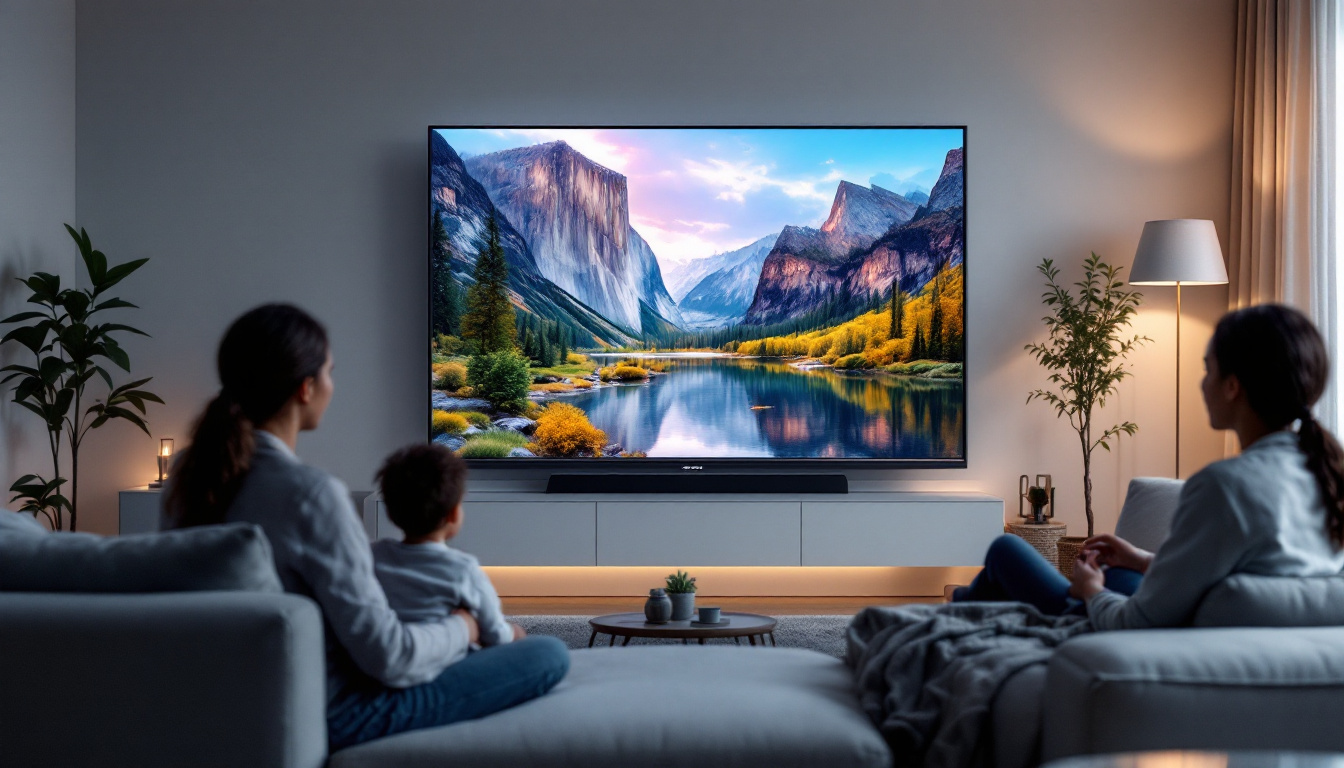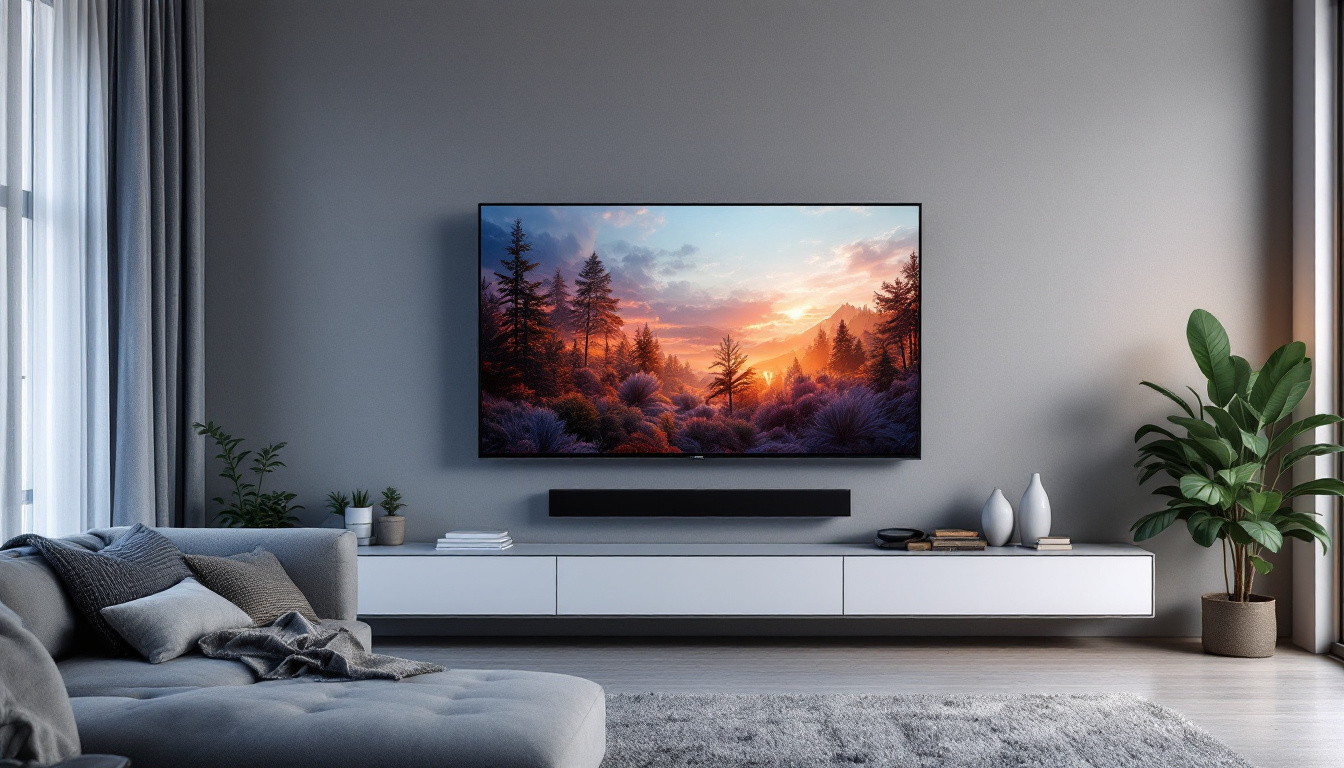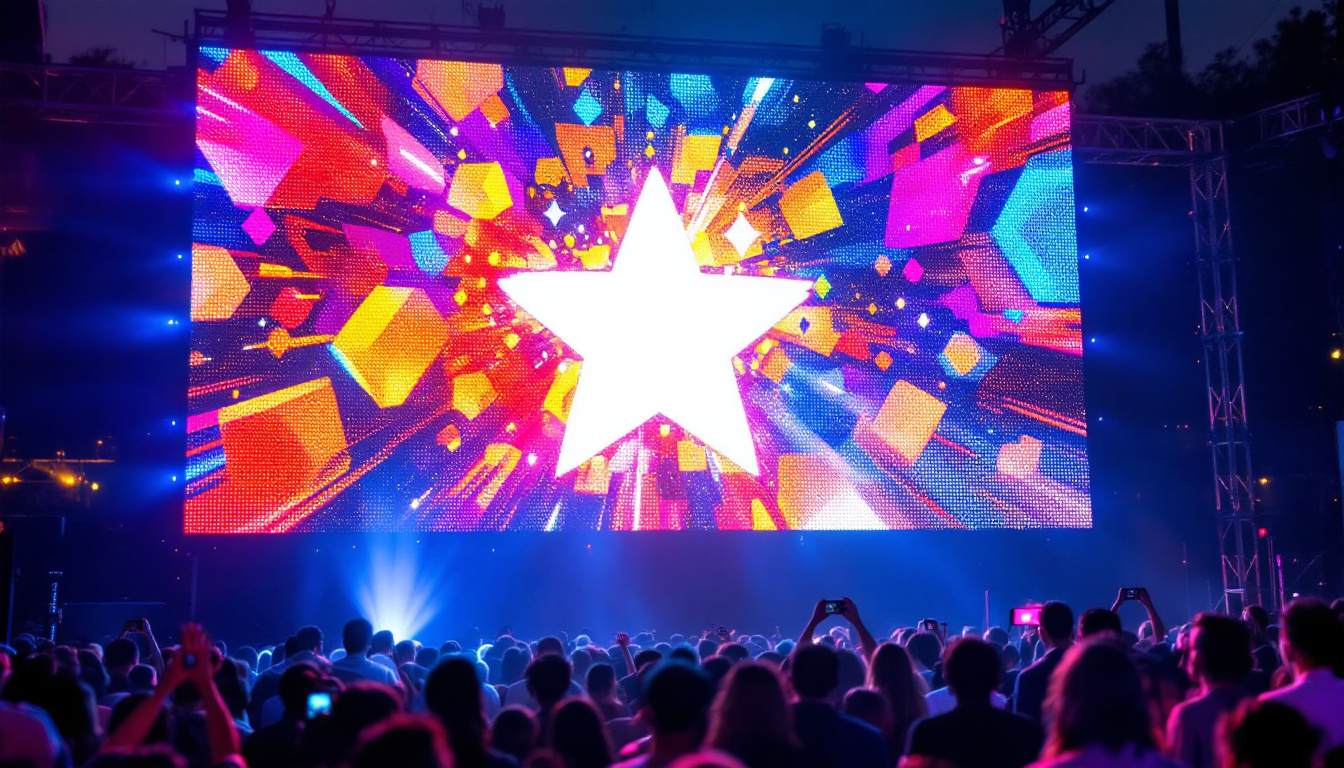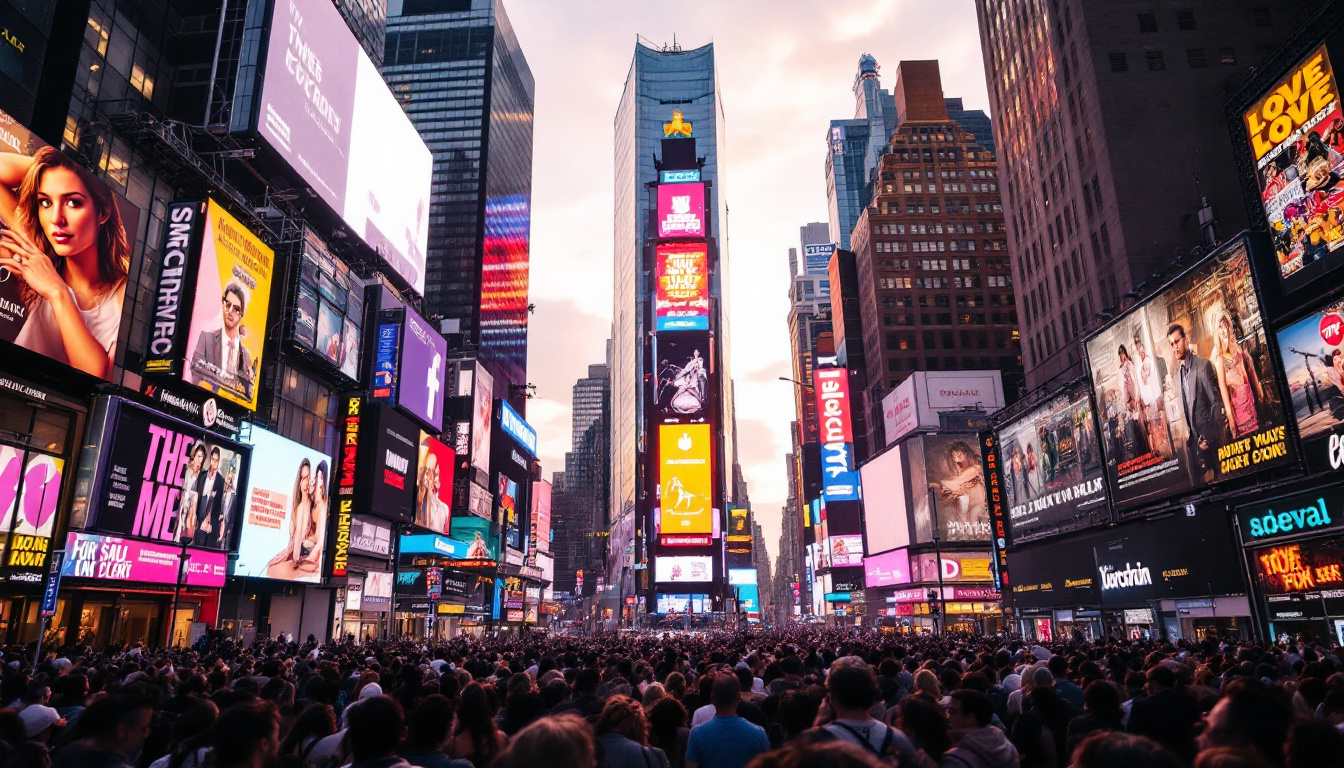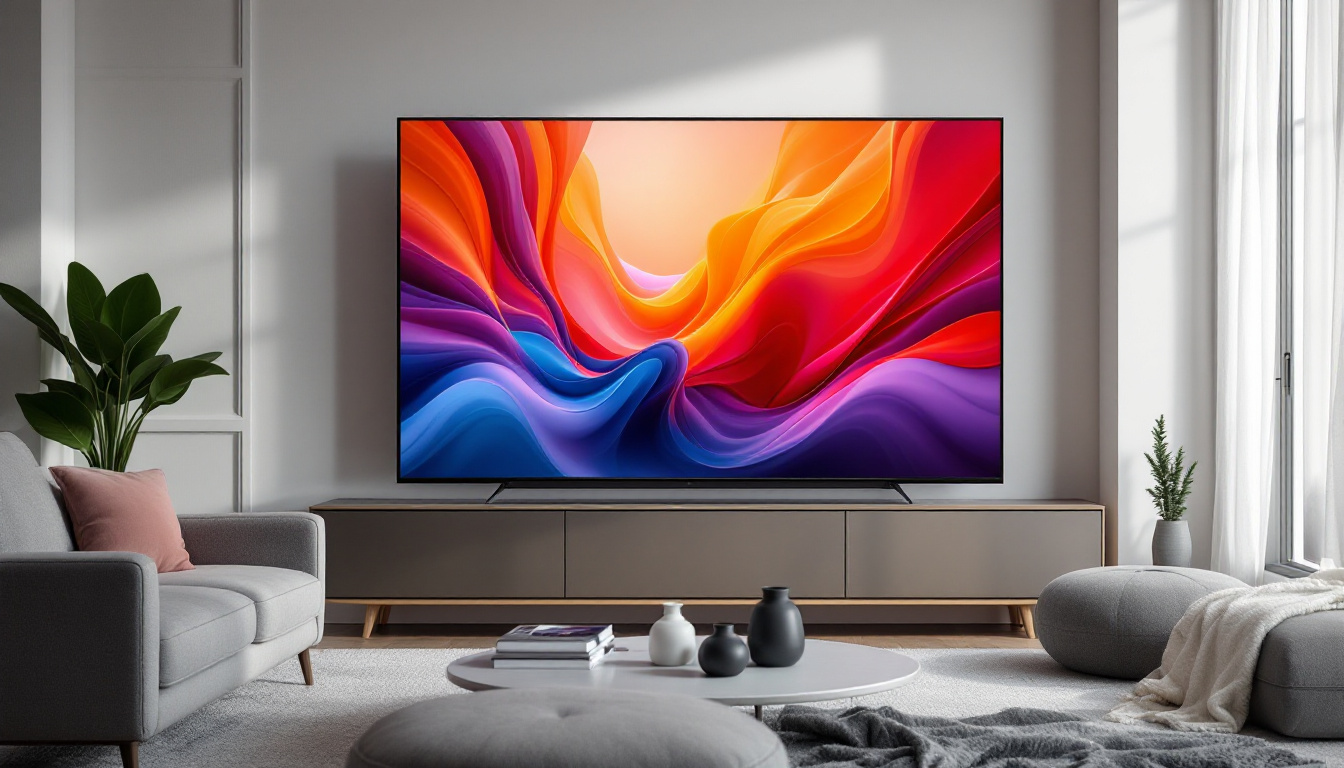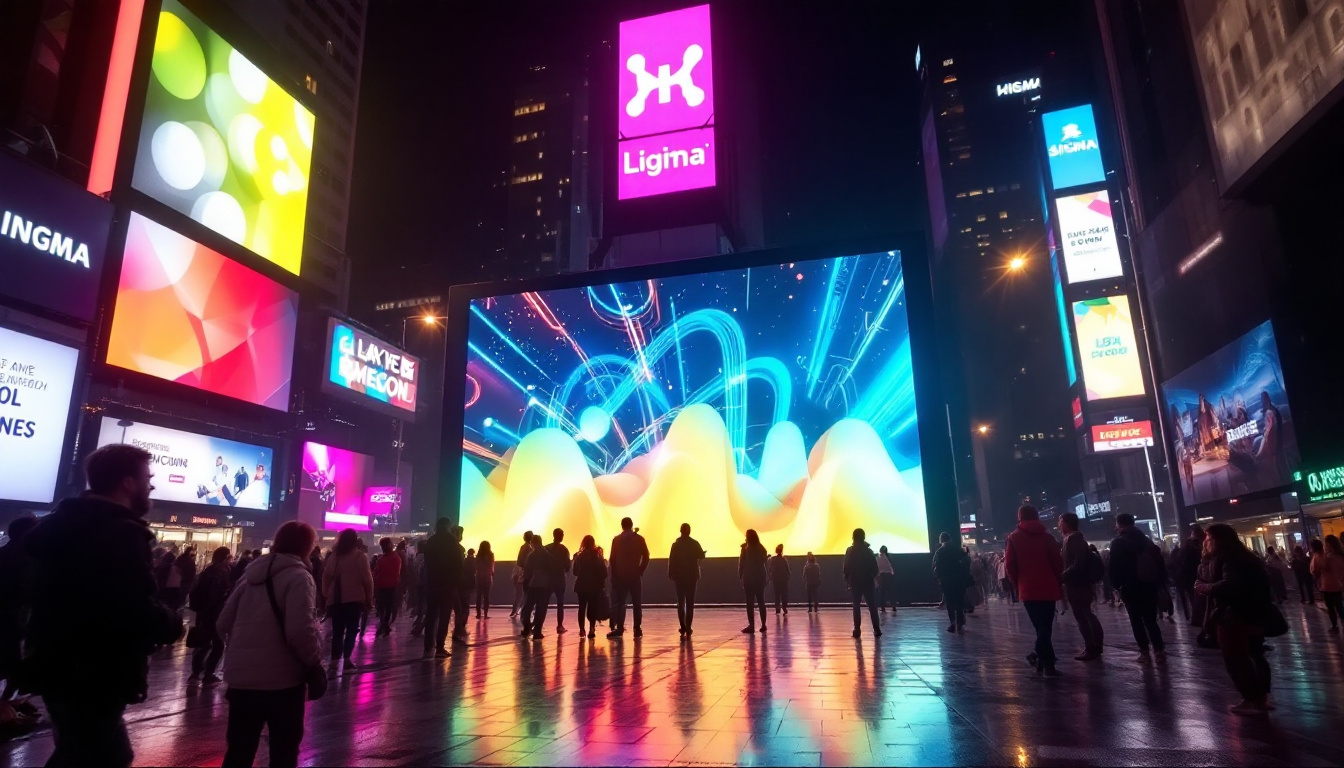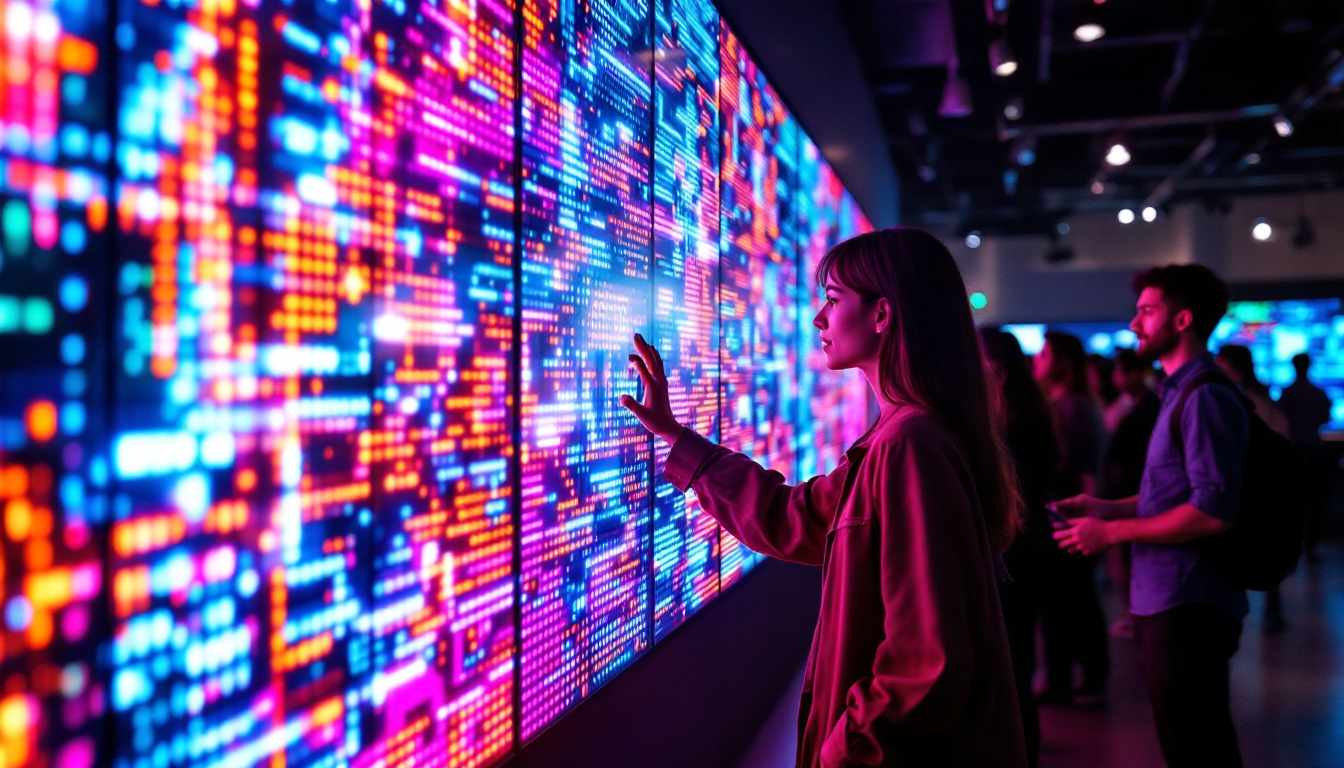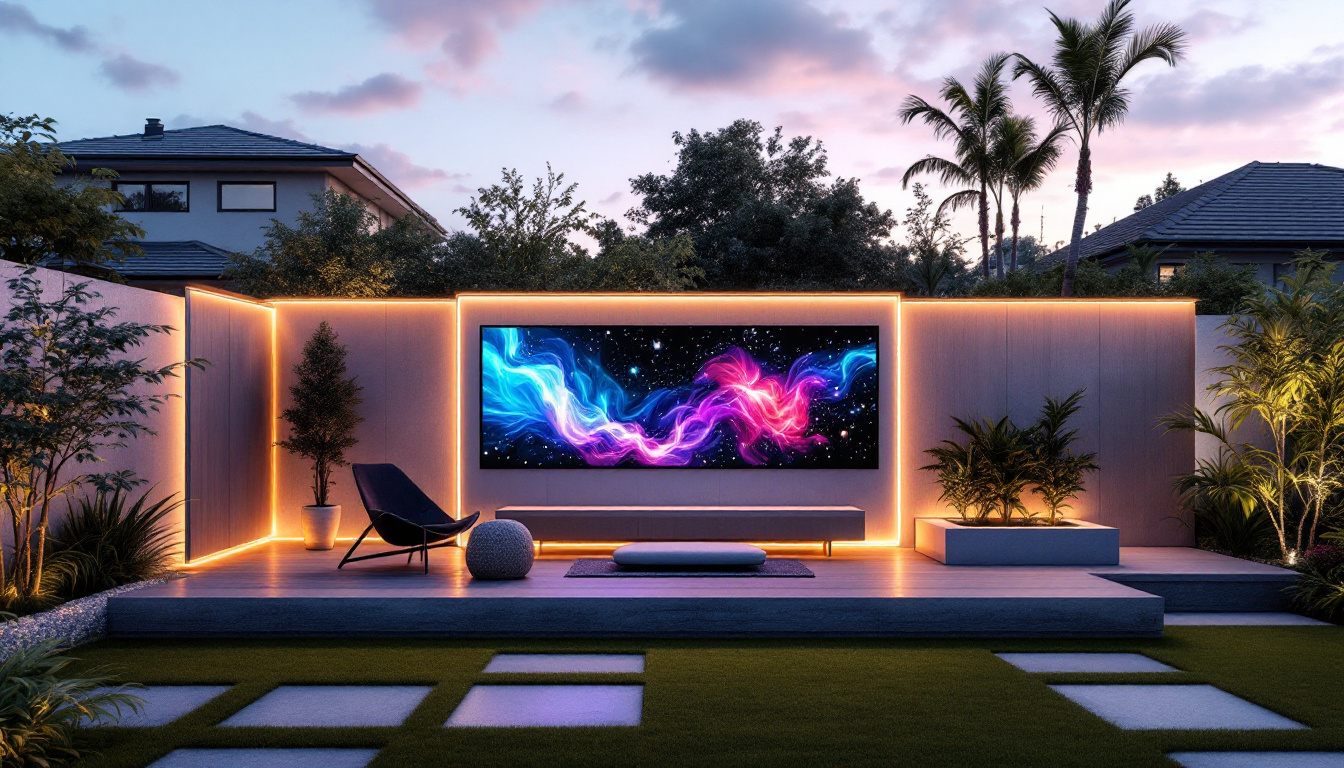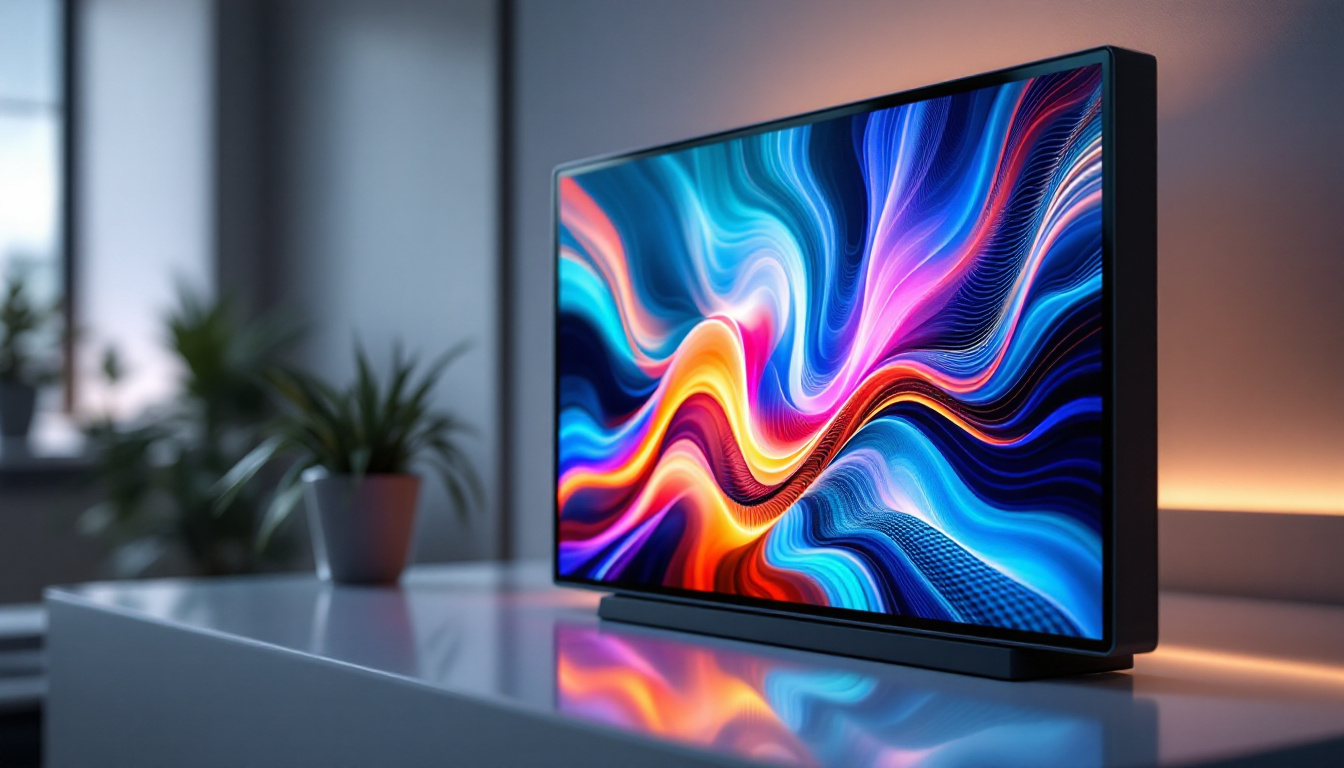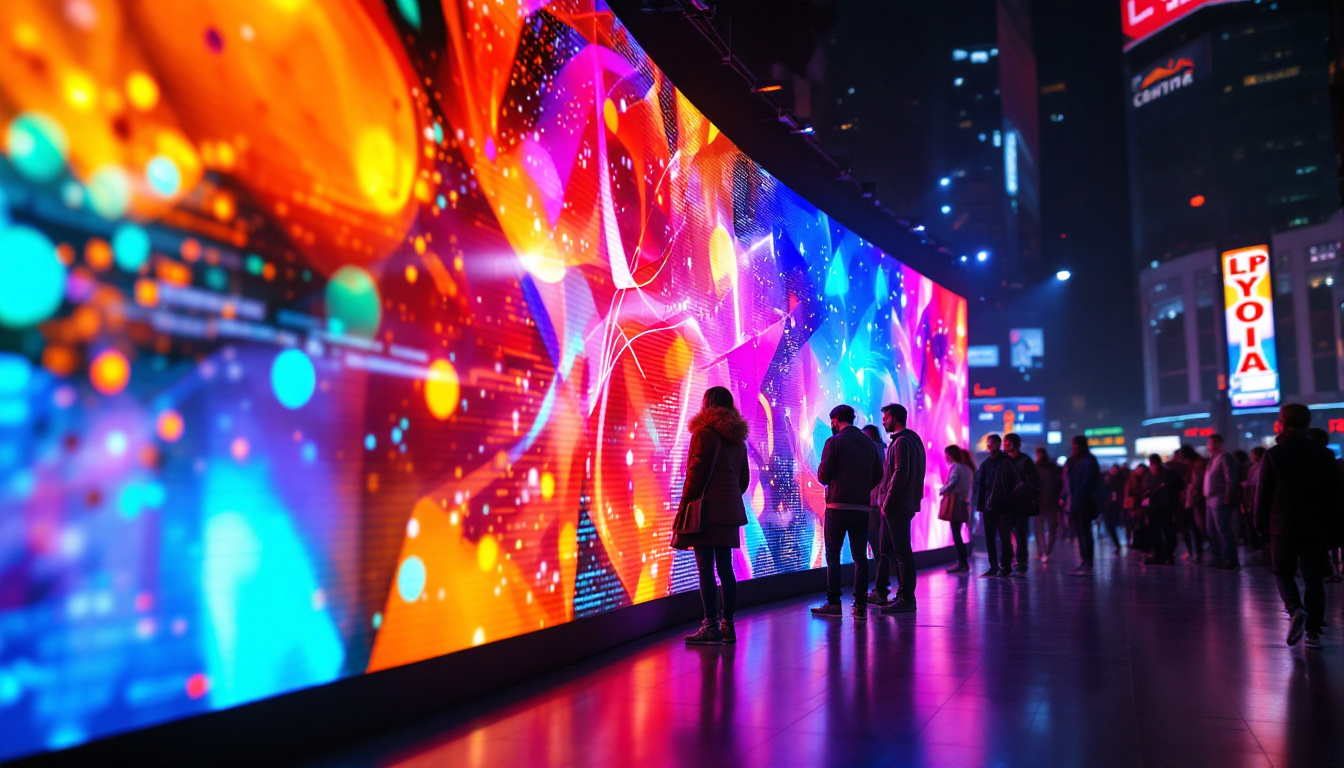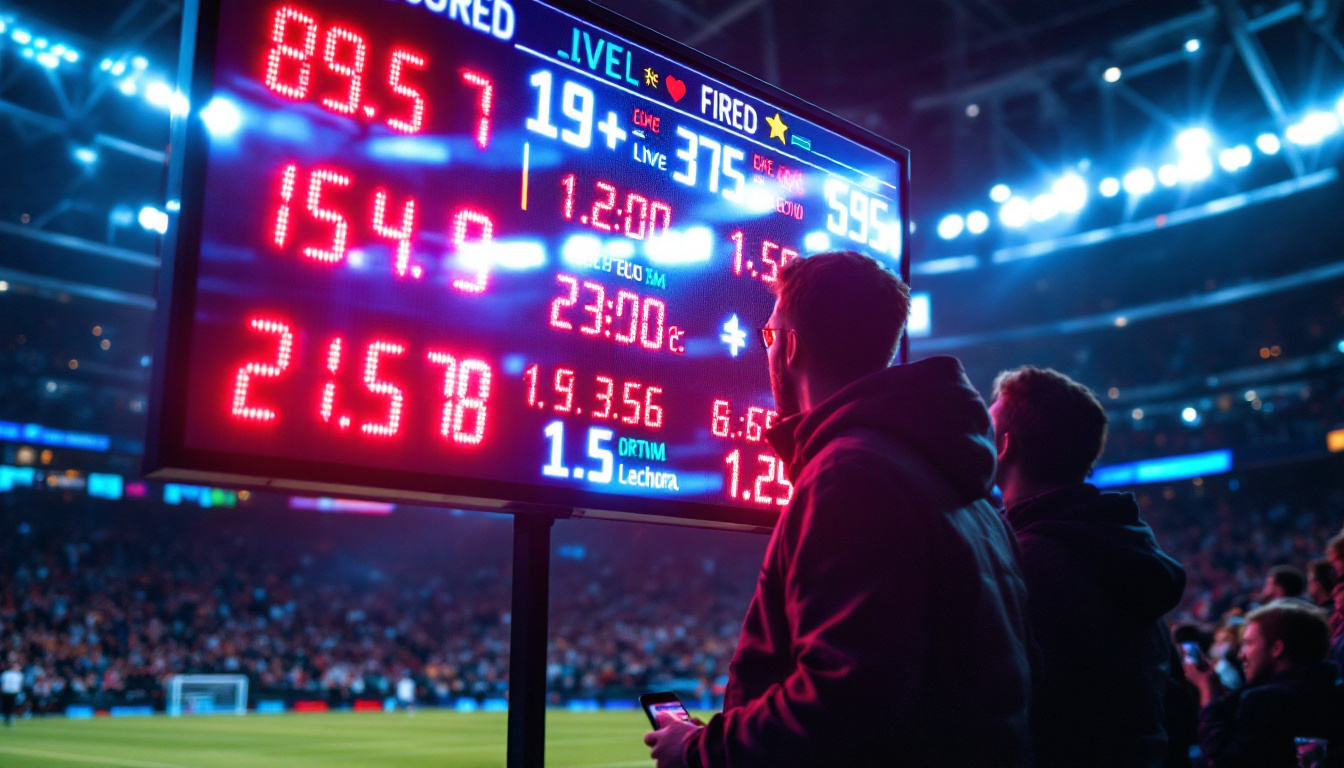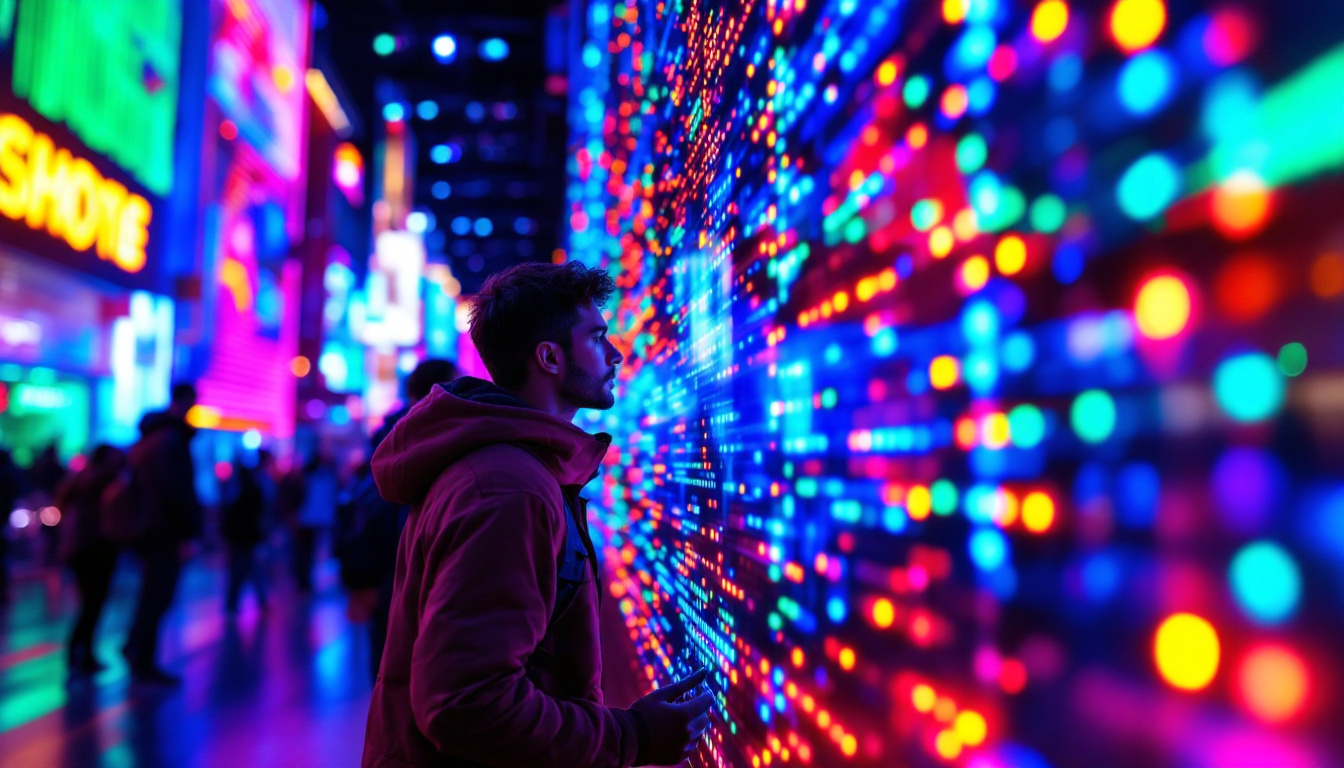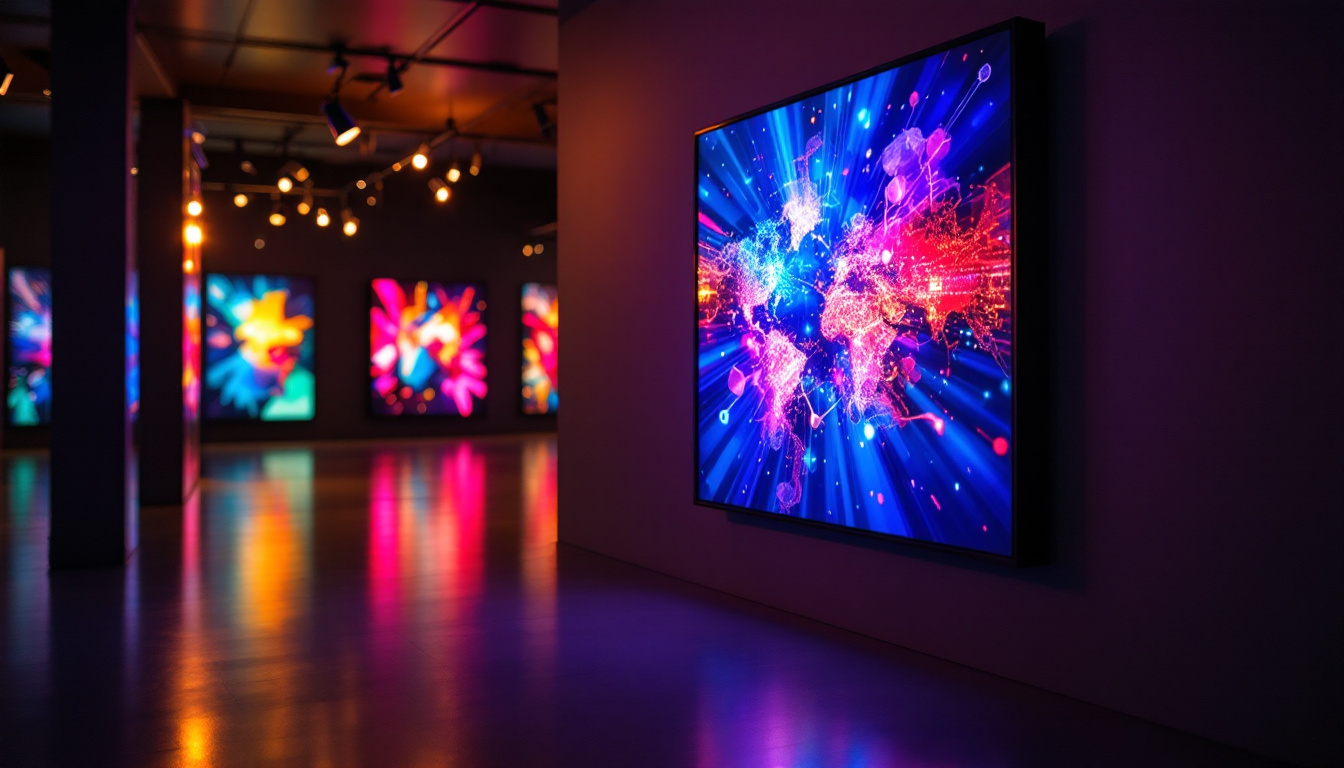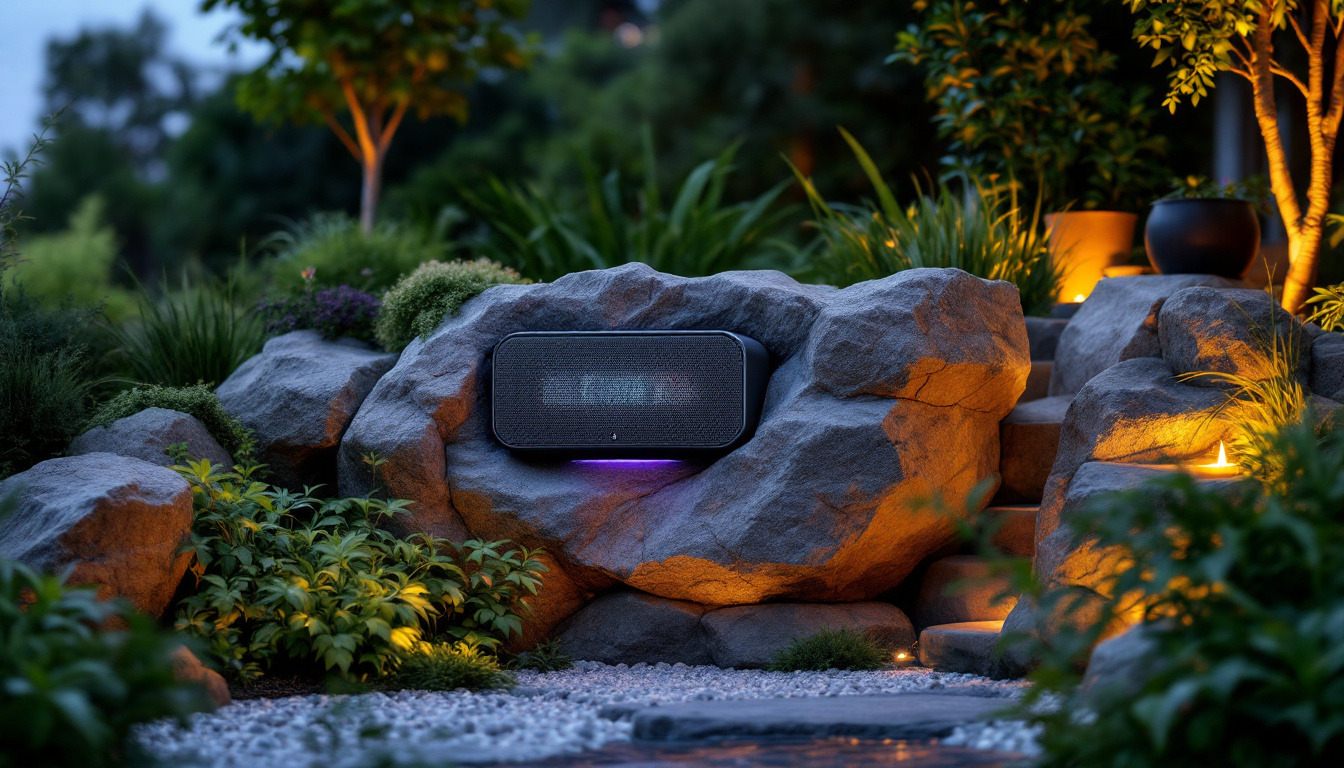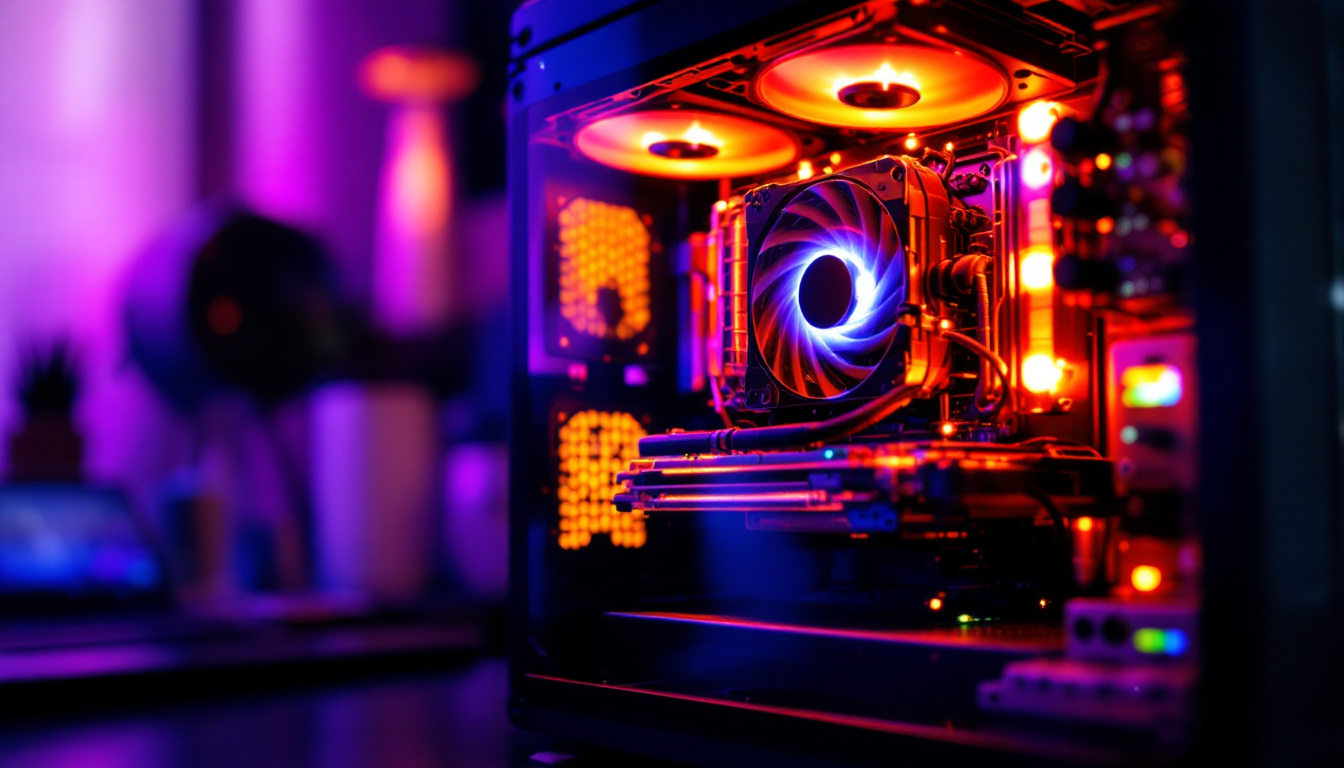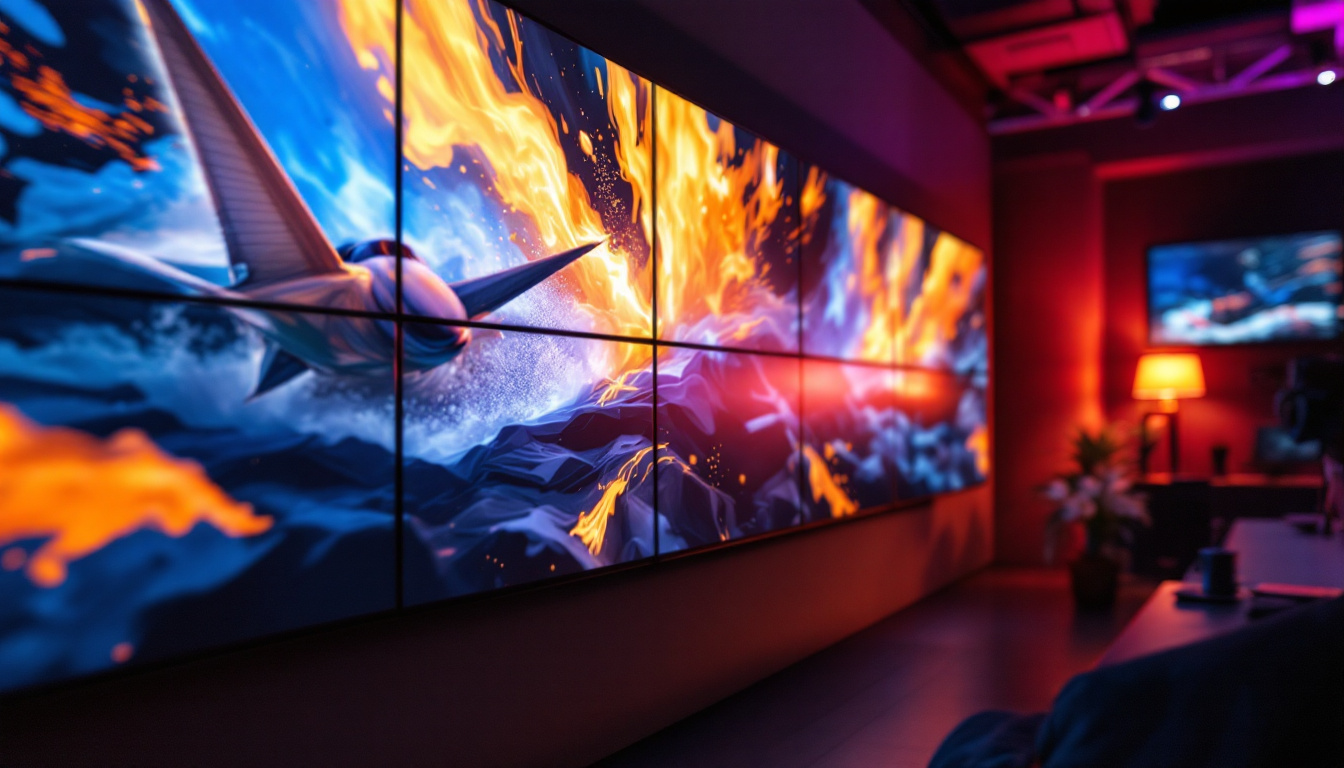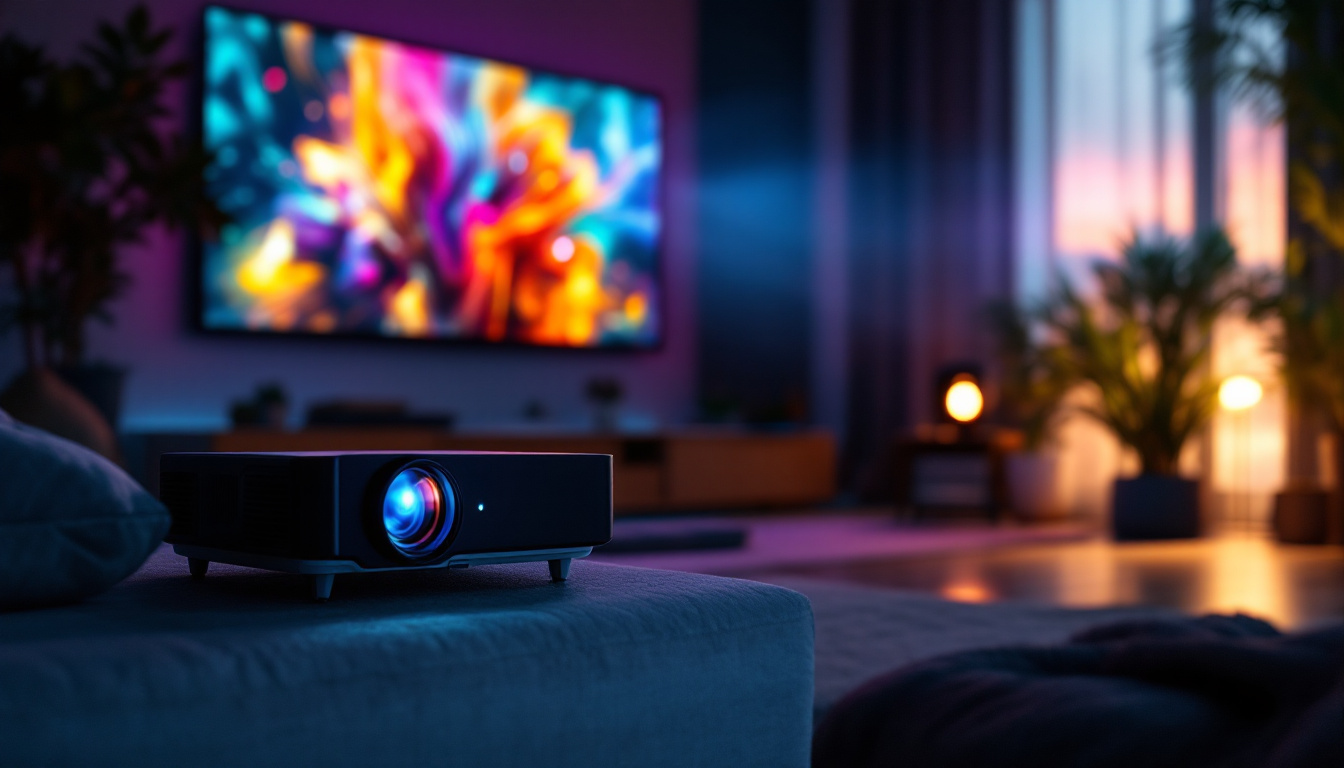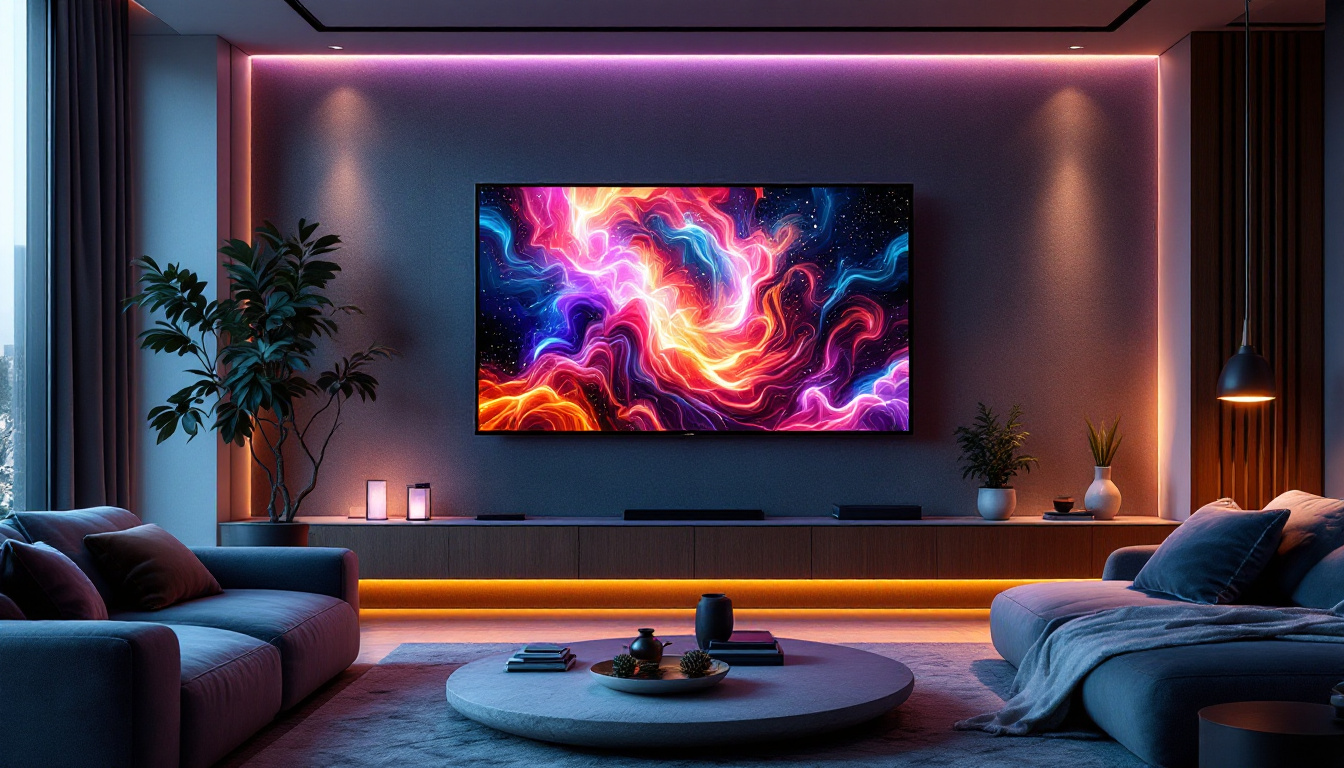In today’s digital landscape, LED displays have emerged as a cornerstone of visual communication. From advertising to event staging, these displays offer vibrant colors, high resolution, and versatility that traditional media cannot match. This article delves into the intricacies of LED technology, its various applications, and the factors to consider when selecting an LED display for your needs.
Understanding LED Technology
Light Emitting Diodes (LEDs) are semiconductor devices that emit light when an electric current passes through them. The technology has evolved significantly over the years, leading to the development of various types of LED displays that cater to different applications. Initially, LEDs were primarily used for indicator lights and simple displays, but advancements in technology have allowed them to become a cornerstone of modern visual communication, lighting, and entertainment.
The Basics of LED Displays
At their core, LED displays consist of numerous tiny LEDs arranged in a grid. Each LED can emit different colors, and when combined, they create a full spectrum of colors that can display images and videos. The resolution of an LED display is determined by the pixel pitch, which is the distance between the centers of two adjacent pixels. A smaller pixel pitch typically results in a higher resolution and clearer image quality. Additionally, the brightness of an LED display is measured in nits, and higher brightness levels are crucial for visibility in brightly lit environments, such as outdoor settings or large venues.
Types of LED Displays
There are several types of LED displays, each designed for specific uses. The most common types include:
- Indoor LED Displays: These are designed for indoor environments, offering high brightness and excellent color reproduction. They are often used in retail spaces, conference rooms, and entertainment venues. Their versatility allows for dynamic content that can engage audiences effectively, making them ideal for advertising and presentations.
- Outdoor LED Displays: Built to withstand harsh weather conditions, outdoor LED displays are brighter and more durable. They are commonly used for billboards, sports arenas, and outdoor events. These displays often feature advanced technologies such as automatic brightness adjustment, ensuring optimal visibility regardless of the time of day or weather conditions.
- Transparent LED Displays: This innovative technology allows for the display of images while maintaining visibility through the screen. They are ideal for storefronts and exhibitions. Transparent LED displays not only serve as eye-catching advertising tools but also enhance the aesthetic appeal of architectural designs, blending seamlessly into the environment.
In addition to these common types, there are also specialized LED displays such as flexible LED screens, which can be bent or shaped to fit unique installations, and high-definition LED video walls, which create immersive viewing experiences in large venues. The continued innovation in LED technology is paving the way for even more applications, including smart city infrastructure and interactive displays that respond to user input, further expanding the possibilities for visual communication.
Applications of LED Displays
The versatility of LED displays makes them suitable for a wide range of applications. Their ability to deliver high-quality visuals in various environments has led to their adoption in numerous industries.
Advertising and Marketing
One of the most prominent uses of LED displays is in advertising. Businesses leverage these displays to capture attention with dynamic content that can be updated in real-time. Digital billboards, for instance, allow advertisers to rotate multiple ads throughout the day, maximizing visibility and engagement.
Moreover, LED displays can be used in retail environments to enhance the shopping experience. Interactive displays can showcase products, offer promotions, and even provide information about inventory, creating an engaging atmosphere for customers. This interactivity not only draws in foot traffic but also encourages longer dwell times, as shoppers are more likely to explore products that are visually highlighted through vibrant LED technology.
In addition to traditional advertising, LED displays are increasingly utilized in social media campaigns. Brands can create live feeds that showcase user-generated content, allowing customers to see their posts featured in real-time. This not only builds community engagement but also fosters a sense of connection between the brand and its audience, making the advertising experience more personal and relatable.
Event Production
In the realm of event production, LED displays have become indispensable. They are used in concerts, conferences, and corporate events to create immersive experiences. Large-scale LED screens can display live feeds, graphics, and animations that enhance the overall production value.
Additionally, the modular nature of LED displays allows for creative configurations, enabling event planners to design unique setups that suit their specific needs. This adaptability is a significant advantage over traditional projection systems. For example, LED walls can be arranged in various shapes and sizes, allowing for stunning visual backdrops that can transform the ambiance of any venue. Furthermore, the high brightness and contrast of LED displays ensure that visuals remain clear and impactful, even in brightly lit environments.
As technology evolves, the integration of augmented reality (AR) with LED displays is becoming more prevalent in events. This combination allows for interactive experiences where attendees can engage with digital elements overlaid on the physical environment, creating memorable moments that resonate long after the event concludes.
Transportation and Public Information
LED displays are also widely used in transportation systems to provide real-time information to passengers. Bus stops, train stations, and airports utilize LED screens to display arrival and departure times, service updates, and safety information.
This not only improves communication but also enhances the overall passenger experience, making travel more efficient and less stressful. The clarity and visibility of LED displays ensure that critical information is easily accessible, reducing confusion and helping passengers make informed decisions quickly.
Moreover, the implementation of LED displays in public transport systems can also serve as a platform for advertising, generating additional revenue for transit authorities. By displaying targeted ads relevant to commuters, these systems can create a win-win situation where passengers receive valuable information while transit operators benefit financially. This dual functionality exemplifies the innovative ways in which LED technology is being harnessed to enhance urban infrastructure and public services.
Choosing the Right LED Display
When selecting an LED display, several factors must be considered to ensure that the chosen solution meets the specific requirements of the application.
Resolution and Pixel Pitch
The resolution of an LED display is crucial for achieving the desired image quality. A lower pixel pitch is generally preferable for applications where viewers will be closer to the screen, such as indoor environments. Conversely, outdoor displays can utilize a larger pixel pitch without compromising visibility from a distance.
It is essential to assess the viewing distance and the type of content that will be displayed to determine the appropriate resolution. High-resolution displays are ideal for detailed graphics and videos, while lower resolutions may suffice for simpler messages.
Brightness and Visibility
Brightness is another critical factor, especially for outdoor displays. The brightness level is measured in nits, and higher brightness ensures that the display remains visible even in direct sunlight. For indoor applications, lower brightness levels may be adequate, but it is essential to consider ambient lighting conditions.
Additionally, the contrast ratio plays a significant role in visibility. A higher contrast ratio enhances the clarity of the displayed content, making it easier for viewers to read text and see images.
Installation and Maintenance
The installation process for LED displays can vary significantly depending on the type and size of the display. It is crucial to work with experienced professionals who can ensure that the installation is performed safely and correctly.
Maintenance is another aspect to consider. While LED displays are generally low-maintenance, regular checks and cleaning are necessary to ensure optimal performance. Understanding the warranty and support options available from the vendor can also provide peace of mind.
Future Trends in LED Display Technology
The LED display industry is continuously evolving, with new technologies and trends emerging that promise to enhance the capabilities of these displays further.
Advancements in Resolution
As technology progresses, the demand for higher resolution displays continues to grow. Innovations such as MicroLED and MiniLED technologies are paving the way for displays with even finer pixel pitches, resulting in unparalleled image quality and color accuracy.
These advancements are particularly exciting for applications in virtual reality and augmented reality, where immersive experiences are paramount. As resolution improves, the line between digital and reality becomes increasingly blurred.
Integration with Smart Technology
Another significant trend is the integration of LED displays with smart technology. This includes the ability to connect displays to the Internet of Things (IoT), enabling real-time data sharing and interactivity. For instance, displays can be programmed to change content based on environmental factors, such as weather conditions or audience demographics.
Such integration not only enhances the functionality of LED displays but also opens up new possibilities for personalized advertising and user engagement.
Sustainability and Energy Efficiency
As environmental concerns become more pressing, the LED display industry is also focusing on sustainability. Manufacturers are developing energy-efficient displays that consume less power while maintaining high performance. This shift not only reduces operational costs but also minimizes the environmental impact of digital signage.
Additionally, recycling programs for old displays are becoming more common, allowing businesses to dispose of outdated technology responsibly.
Conclusion
LED displays have revolutionized the way information is communicated, offering vibrant visuals and versatility that traditional media cannot match. With applications spanning advertising, event production, and public information, their impact is undeniable.
As technology continues to advance, the future of LED displays looks promising, with innovations that enhance resolution, integrate smart technology, and prioritize sustainability. For businesses and organizations looking to invest in visual communication, understanding the nuances of LED displays is essential for making informed decisions.
Ultimately, the right LED display can transform how messages are conveyed, engage audiences, and elevate experiences across various settings. As the digital landscape continues to evolve, LED displays will undoubtedly remain at the forefront of visual communication.
Explore Cutting-Edge LED Display Solutions with LumenMatrix
Ready to elevate your visual communication with the latest in LED display technology? Discover LumenMatrix’s comprehensive range of LED display modules, designed to captivate your audience and amplify your message. From vibrant Indoor and Outdoor LED Wall Displays to innovative solutions like Vehicle LED Displays, LED Posters, and Transparent LED Displays, LumenMatrix is at the forefront of creating immersive visual experiences. Embrace the future of digital signage with our state-of-the-art LED Sports Displays, Floor LED Displays, and Custom LED solutions. Check out LumenMatrix LED Display Solutions today and see how we can transform your space into a dynamic visual showcase.

